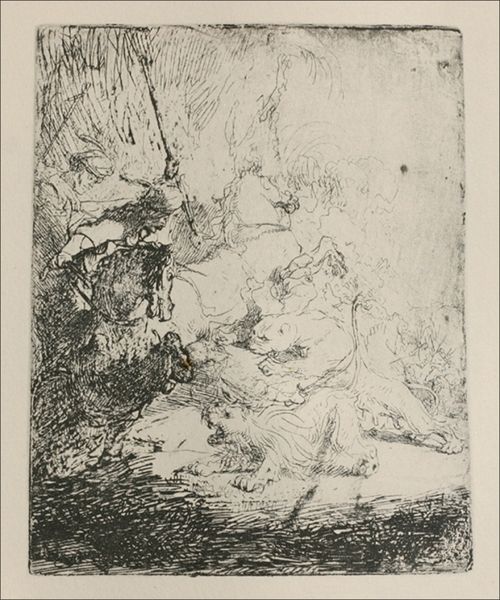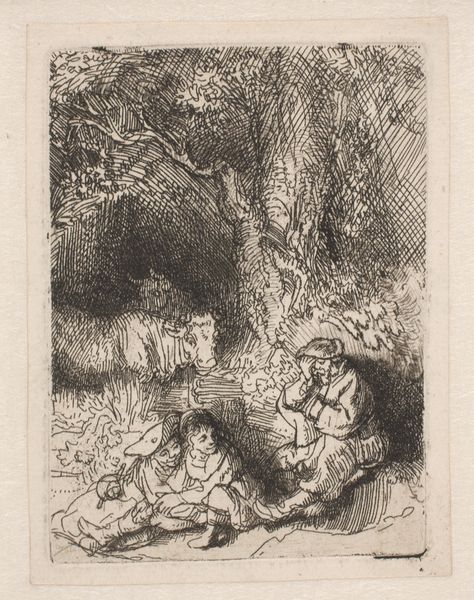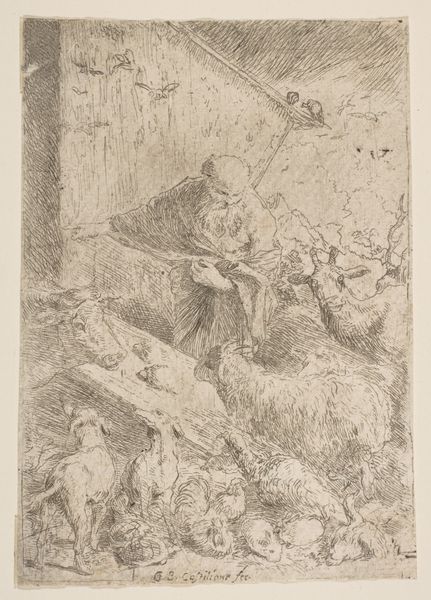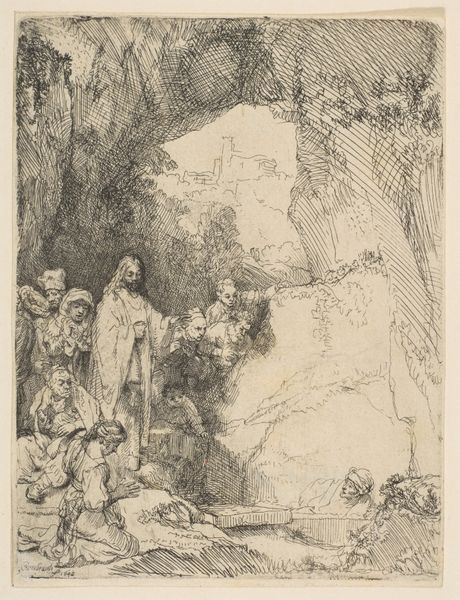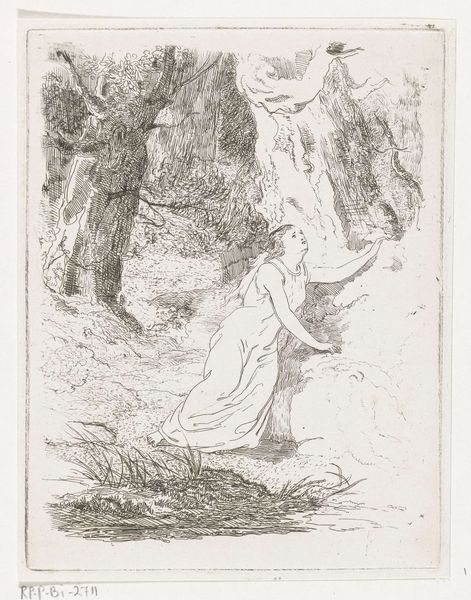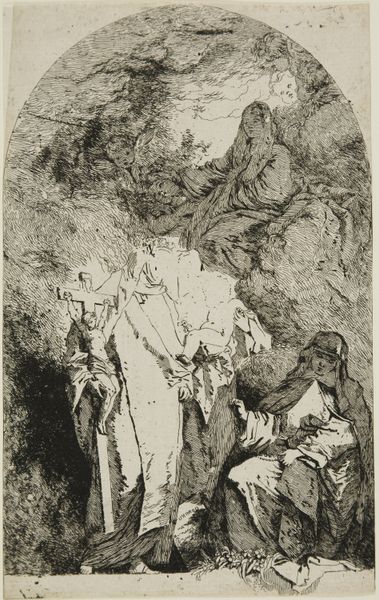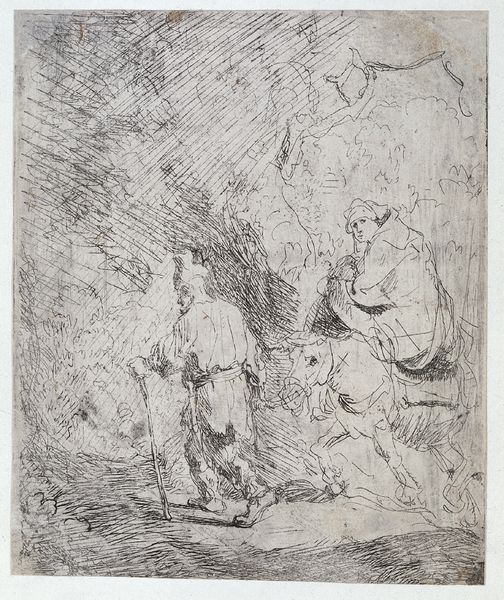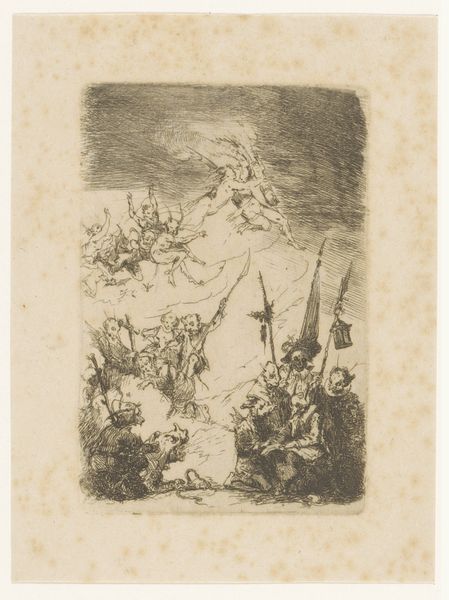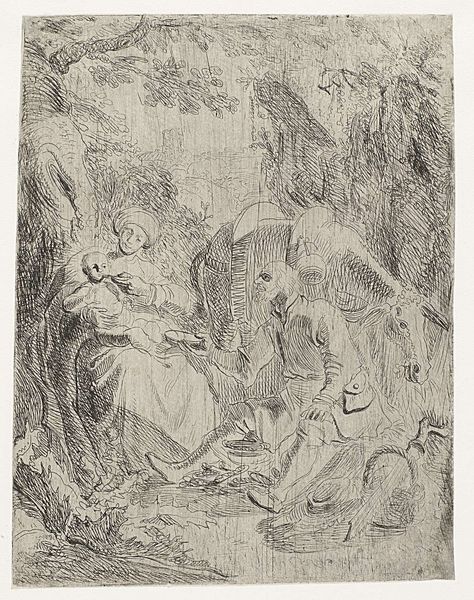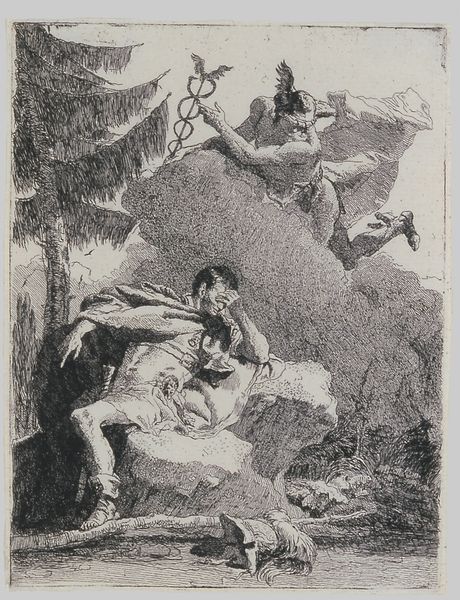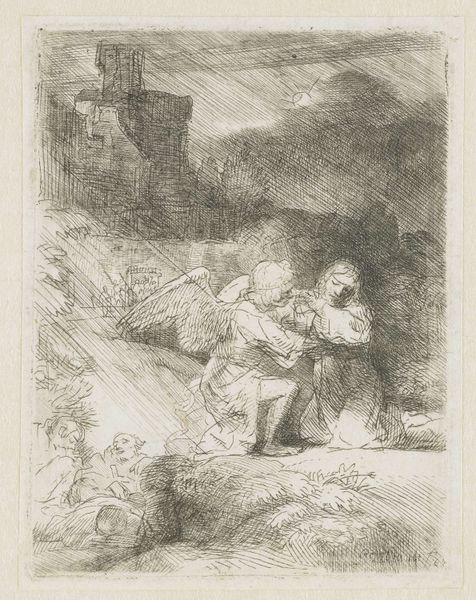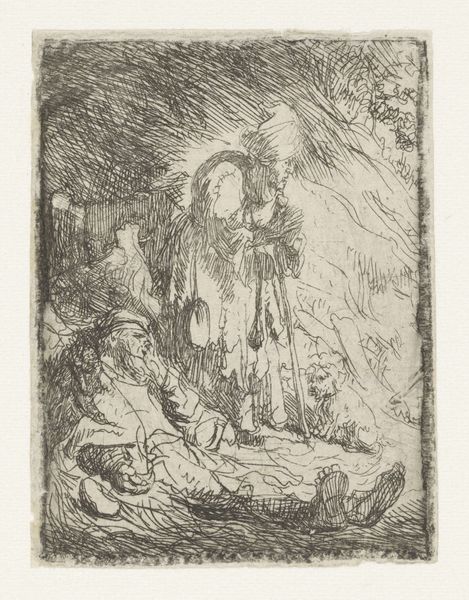
drawing, print, etching
#
drawing
#
ink drawing
#
narrative-art
#
baroque
# print
#
pen sketch
#
etching
#
etching
#
figuration
#
genre-painting
Copyright: Public domain
Editor: So, this etching is called "The small lion hunt with two lions," and it’s by Rembrandt van Rijn, created around 1629. It's amazing how much energy is conveyed with such simple lines. What can you tell me about it? Curator: Well, considering its medium, it’s important to note that etching allowed for multiples. Who was the intended audience for such a piece? It clearly alludes to elite practices of hunting but also translates that into a commodity intended for consumption. We need to look closely at the division of labor implicit in its making: the original artist, those who prepared the plate, and the vendors that then marketed and sold it. How did this reproductive process shape perceptions and accessibility? Editor: That’s a good point; prints made art more accessible. But how does the subject, the hunt itself, connect to the material realities of 17th-century Holland? Was Rembrandt commenting on something specific about the aristocracy? Curator: The hunt can be seen as a representation of power, specifically of a ruling class’ dominance over nature. This speaks directly to land ownership, colonial aspirations and capitalist enterprise of the era. The material realities were about expanding wealth and exploiting natural resources. Etchings like these, therefore, aren’t just artistic representations; they’re also artifacts that illuminate socio-economic forces. What about the relationship between these themes of control, commodification and distribution in colonial context? Editor: That is interesting. I hadn't thought about how deeply the means of making an image reflects social dynamics. Curator: Exactly! Considering the relationship between material conditions and aesthetic choices makes us examine what ideological assumptions these aesthetic choices reinforced. It moves us beyond traditional art history analysis. Editor: I am starting to look at art from new perspectives now. Thanks.
Comments
No comments
Be the first to comment and join the conversation on the ultimate creative platform.
